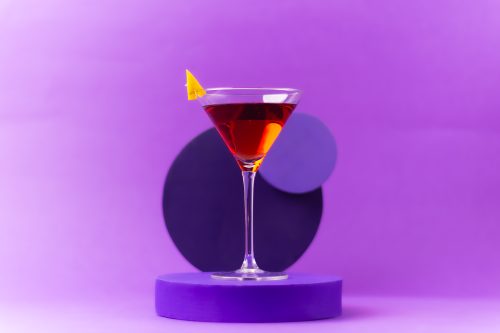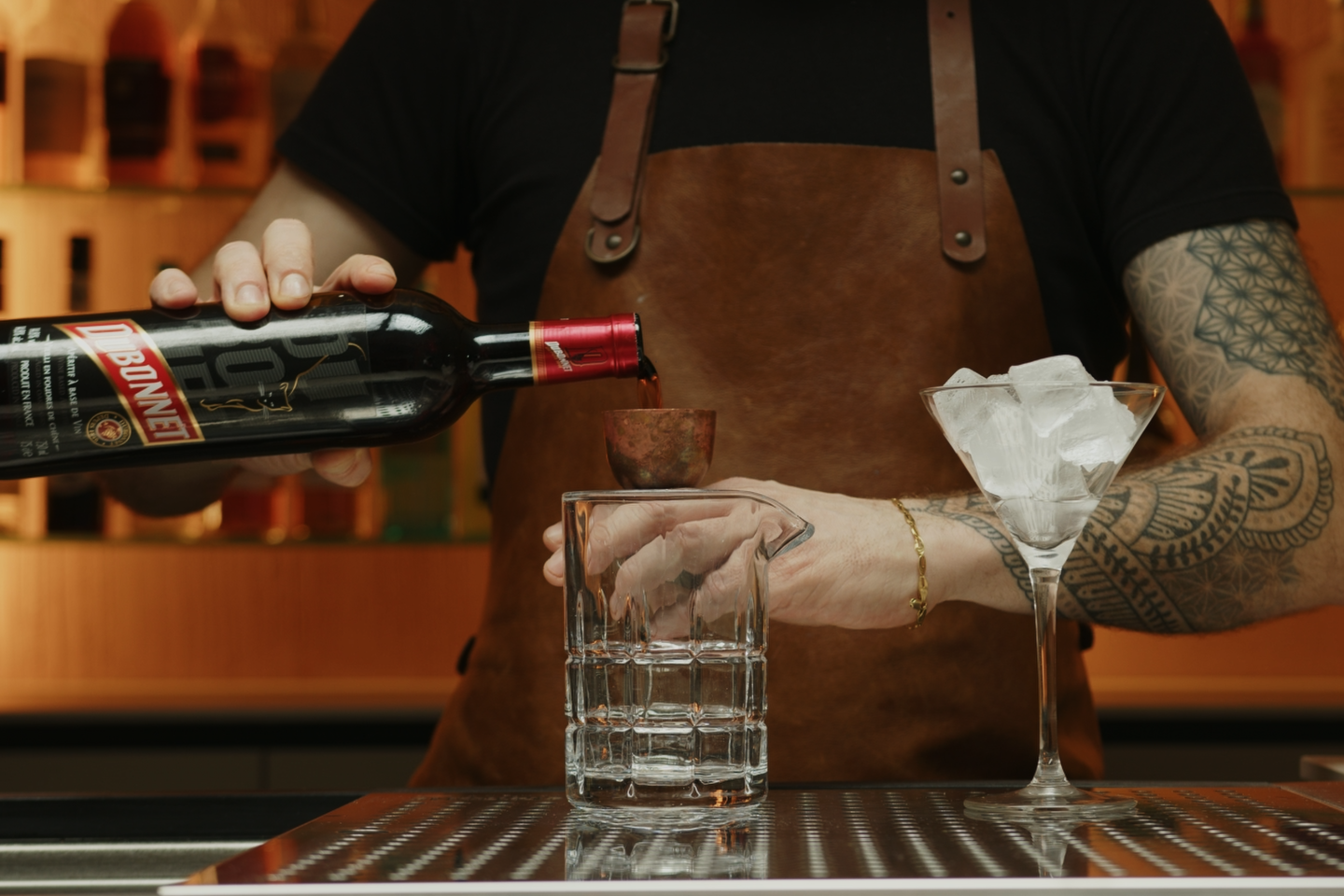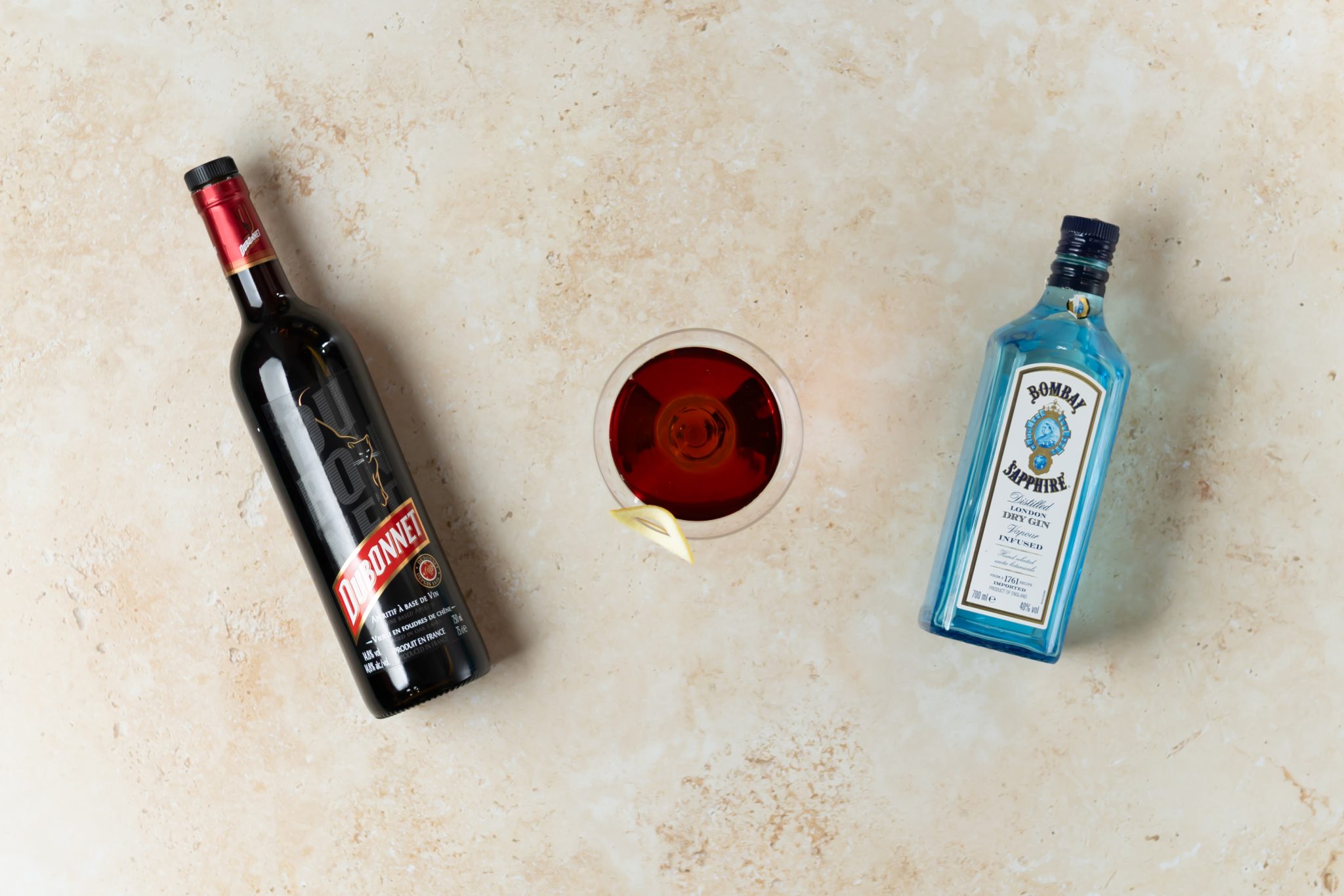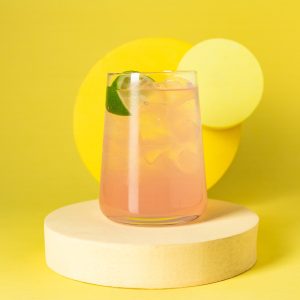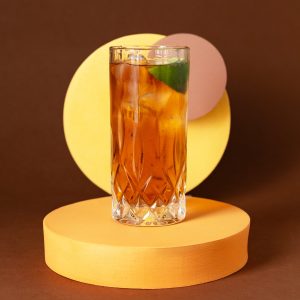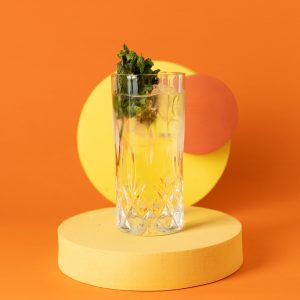Embrace the chill of winter with this simple Dubonnet cocktail recipe! Crafted with Dubonnet, Gin, and a twist of lemon, this refreshing drink is an ideal companion for frosty evenings.
Prep time:
1 minute minute
Mixing time:
1 minute minute
Servings:
1
Calories:
166
Ingredients
- 1½ oz London Dry Gin
- 1½ oz Dubonnet Rouge
- Lemon twist - for garnish, optional
Equipment
- Cocktail Glass (Martini or coupe style)
- Measuring Jigger
- Mixing Glass
- Cocktail stirrer
- Stirrer or Bar Spoon
Instructions
- Prep Glass: Fill a Martini glass with ice. Give it a stir to chill it and set it aside.
- Add Dubonnet: Measure and pour 1½ oz Dubonnet Rouge into the mixing glass.
- Add Gin: Add 1½ oz London Dry Gin.
- Add ice and stir: Fill the mixing glass with ice. Using a bar spoon or a long stirrer, stir well (for about 15-20 seconds). Give it a taste and stir a bit more if you feel like more dilution is necessary.
- Strain: Take your Martini glass or cocktail coupe and discard the ice inside. Using the cocktail strainer, strain the mixture into the chilled glass.
- Garnish: Garnish with a lemon zest twist (express the lemon zest on top of the drink and then place it on the rim of the glass or drop it directly inside).
Notes
Substitutes:
- London Dry Gin: Although London Dry is generally considered the best option for this cocktail, you can experiment with any kind of gin you like. Vodka can be a good alternative if you don't have Gin at all. It will give you a less botanical flavor, but should still work in this cocktail.
- Dubonnet Rouge: If you can't find Dubonnet Rouge, you can use Lillet Rouge or another type of sweet vermouth. It won't be the same, but it will still give you a nice cocktail.
Making a Pitcher of Dubonnet Cocktail:
- Scale: To make a pitcher that serves 8, multiply all the ingredients by 8. That would be 12 oz of Gin and 12 oz of Dubonnet Rouge.
- Mix: In a large pitcher, combine the Gin and Dubonnet Rouge. Add ice and stir well.
- Serve: Strain to remove the ice, serve immediately into chilled Martini or Coupe glass, garnish with a lemon zest twist, and serve immediately. If you have some leftovers, be sure to keep it in the fridge (make sure no ice cubes are left inside) in an airtight container as Dubonnet is prone to oxidation when kept at room temperature.
Making it Non-Alcoholic:
- Gin Substitute: Use a non-alcoholic gin substitute; these are available and reasonably mimic Gin's botanicals.
- Dubonnet Substitute: Opt for a non-alcoholic red vermouth (Martini Vibrante for instance). These are usually widely available in liquor stores.
- Proceed As Usual: Use these non-alcoholic substitutes instead of the regular ingredients, follow the original steps, and enjoy a non-alcoholic version.
Making it Vegan:
Gin and Dubonnet Rouge are typically vegan, but it's always a good idea to check the specific brands you're using to ensure they don't use animal products in their production process.What is a Dubonnet Cocktail?
A Dubonnet Cocktail is a gin-based aperitif cocktail made of Dubonnet Rouge, London Dry Gin, and a lemon peel . This drink is relatively easy to make, requiring only two ingredients and simple mixing techniques. The key to its unique flavor lies in the Dubonnet Rouge, a fortified wine that adds depth and complexity to the cocktail.

What is a Dubonnet Cocktail made of – The ingredients
To mix up a Dubonnet Cocktail, ensure you have these ingredients:
- Dubonnet Rouge: A sweet, aromatized wine-based aperitif, it forms the cocktail’s base and imparts a rich, fruity flavor.
- London Dry Gin: This distilled alcoholic drink gives the cocktail a strong and sharp taste.
- Lemon Twist for Garnish: This thin strip of lemon peel adds a citrusy aroma to the drink and enhances its visual appeal.

